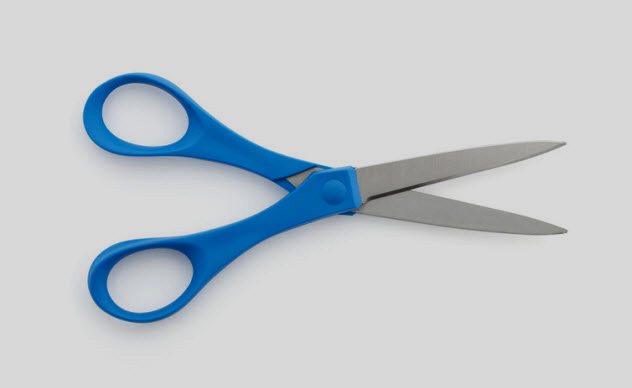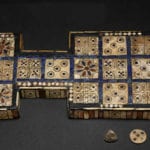Although some of the biggest modern-day tools are credited to those of later existence, ancient Egyptians were way ahead of us. Like us, the ancient Egyptians were always looking for ways to make their lives easier and more stress-free. The following is a compilation of objects and ideas that have survived the test of time without anyone realizing it.
10 Government
Although it is often taught that the Roman Empire had the first system of government, that is actually just the first record of government in the West. The very first governmental structure is credited to the early ancient Egyptians. Even more surprising, this political system did not surround the pharaoh as many believe. Until around 1570 BC, ancient Egypt was ruled by kings. During the predynastic period, Egypt was under control of the Scorpion Kings, which sounds suspiciously like a motorcycle gang. We don’t know how the government was run until King Narmer came to power and established the first central government within their preexisting borders.[1] From there, the economy grew from trading between the classes to separate provinces, individual wealth, and taxes. This means that, yes, ancient Egyptians probably also tried getting away with tax evasion.
9 Calendar
Until the time of government policies and economic standing, there was no need to keep track of days. But this was about more than those pesky tax collectors needing to know when to threaten people. Due to their irrigation systems, the ancient Egyptians also needed to figure out when the Nile was going to flood. Thus, they created the 365-day calendar. Originally, the calendar had 370 days until they realized they needed a shortened year and merely added leap years. So if you were born on a day that only occurs in a leap year, are actually only 20, and still have grandchildren, you have the good old Egyptians to thank.[2]
8 Wine
New Year’s Eve, Christmas, birthdays—these are all fantastic excuses to party and drink a little too much. We can thank the ancient Egyptians for one of our favorite social activities as they were the first people to invent wine.[3] The new calendar probably gave them even more reason to drink as they could now mark different dates to get wasted. Originally, the vineyards uncovered by archaeologists were assumed to be for the purpose of growing and eating grapes. Then archaeologists found wine residue in the bottom of several pots, proving that those ancient Egyptians liked to get down. In fact, so many vessels have been tested with the same end result that the ancient Egyptians appear to have been obsessed with the stuff. With so many ancient holidays (including a five-day celebration at the end of the year), historians find it easy to understand why wine was so insanely popular. So, next time you go to a party, just remember to get down like it is 3000 BC.
7 Toothpaste
During the 1600s, London was documenting deaths with the “Bills of Mortality.”[4] While seemingly quite grim, this document listed infected teeth as one of the leading causes of death (only behind severe epidemics such as the bubonic plague). This was due to the lack of proper dental care at the time. In fact, people did not even consider that what they were eating could cause such an illness with their teeth. Little did they know that the ancient Egyptians had already conquered that hurdle centuries earlier. Ancient Egyptians realized the toll their teeth were taking and discovered a simple solution to this problem. Yes, the first form of toothpaste was invented by the Egyptians using an almost nauseating list of ingredients such as crushed ox hooves, ashes, and burned eggshells. Along with toothpaste came mints. They had a less unsettling ingredient list that included rock salt, dried mint, and dried iris. In fact, multiple recipe lists (along with how-to guides) from ancient Egypt have been discovered. This simple invention saved the lives of many people at the time.
6 Pens
If you have delved into any conspiracy theories, you have surely come across the belief that aliens were buddy-buddy with the ancient Egyptians. After the discovery of some suspicious-looking images and hieroglyphics carved in stone, conspiracy theorists went wild with the idea that ancient aliens and ancient Egyptians peacefully coexisted. However, everyone seemed to overlook the fact that these carvings were rarer than we often think. Early on, ancient Egyptians realized the burden of such an impractical writing system, resulting in the invention of parchment and pens. While most of us assume that the natural progression of writing aids started with the quill, reed pens actually came first. Ancient Egyptians developed a form of writing never seen before. They would soak the ends of long pieces of reed in water and then cut the ends into points, causing them to crack and dispense the ink. This made portable documents possible and improved the overall efficiency of life.[5] However, they soon learned that these pens dried out quickly, which led to the use of quills. It was not until the late 1800s that society returned to the first Egyptian idea and developed the modern-day ballpoint pen, including a cap this time to prevent them from drying out as quickly.
5 Clocks
Being late to work was a problem even for the ancient Egyptians as they, too, had clocks. An obelisk or a sundial was the earliest form of clock, but they only worked with a clear sky. This led to the invention of the water clock. Looking similar to the cold Brewmaker you see in the local hipster coffee shop, this clock worked by slowly dripping water throughout the day, making it possible to tell time indoors. From there, they made portable shadow clocks. These devices had such an impact on daily life in ancient Egypt that everyone was fascinated by the idea. Thus began the journey to modern-day clocks.[6]
4 Prostheses
While prostheses are a seemingly new concept, they actually date back to 950 BC. Although they weren’t electronic like some made today, they did help their owners to lead more efficient lives. So far, archaeologists have discovered an Egyptian artificial big toe as the world’s earliest prosthesis. Many body part look-alikes were found in the tombs of the ancient Egyptians, but they ultimately served no purpose except to make the body whole for the afterlife. This changed when a three-part big toe made from wood and leather was found mummified with its owner. To prove this toe was made to assist its owner in walking, multiple replicas were made and tested with the scientific method. A group of toeless individuals walked with and without the prostheses to figure out if they worked. The results determined that the toe created positive outcomes, leading to the classification of the original toe as an early prosthesis.[7]
3 Scissors
A common misconception is that Leonardo da Vinci invented scissors. In reality, the original design was created as far back as 1500 BC. Although the Romans engineered the cross-blade design we know today, the ancient Egyptians had a simpler but effective version. It was a single piece of metal fashioned into two blades that were controlled by a metal strip between the blades.[8] With the invention of scissors, ancient Egyptians could cut their hair into different styles. Even the most skilled hair stylist could not replicate those without a good pair of shears.
2 Plow
Agriculture has been the backbone of countless civilizations. But the ancient Egyptians were the first to produce the technology needed to farm efficiently. Until the plow was invented, people had to walk around with “digging sticks,” which were long sticks shoved into the ground to make holes into which seeds were dropped. Without these sticks, it could take weeks or even months to finish the job. The Egyptians were tired of these sticks and the countless hours of using them. So they formulated the first known plow, the ard.[9] The ard was simply a digging stick with an arched handle and a stone or metal point attached to the bottom. With this invention, the ancient Egyptians could simply walk with the ard and create a deep groove for multiple seeds at a time. While this is not comparable to the plows we have today, this small piece of technology started changing the lives of farmers at the time.
1 Hair Dye
If you have ever seen a depiction of ancient Egyptians, it will come as no surprise that they were very particular about their appearance. Not only did they create makeup, wigs, and hair extensions, but they also developed the first hair dying technique. Hair was not only for looks but for displaying your social status. The better you kept your hair, the wealthier you were.[10] Ancient Egyptians strived for an endless youthful look, and gray hair did not fit this ideal. So they started using dried henna leaves to create a reddish-brown paste that dyed the hair. Henna was also used to stain the nails and lips. The color could be controlled by adding more or fewer leaves to the mixture. I am a freelance writer based in Pittsburgh looking to share my work with the world!
























